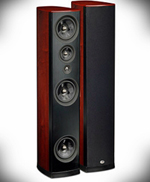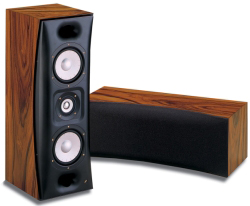Introduction
Thiel Audio has been designing and building loudspeakers for over 30 years. The 1978 Model 03 was one of the first multi-driver speakers to utilize a time and phase accurate design. This has been at the heart of all Thiel designs ever since, and is consistently found throughout their product line. This is a lofty and difficult design choice which, when done right, can provide an enveloping and realistic musical presentation. It is not easy to do, and even 30 years later we do not see many examples of this design. And what makes it so difficult? You need high-quality crossover parts, custom designed drivers and a competent team that can put it all together.
Specifications
- MCS1
- Design: 2-1/2 way, Ported
- Drivers: One 1″ Metal Dome Tweeter, One 3.5″ Midrange, Two 6.5″ Metal Cone Woofers
- MFR: 47 Hz – 23 kHz
- Sensitivity: 90dB @2.8v /1m
- Nominal Impedance: 4 Ohms
- Recommended Power: 50 – 300 watts
- Dimensions: 28.5″ H x 10″ W x 12.5″ D
- Weight: 61 Pounds/each
- MSRP: $2,950/each
- Design: Powered Subwoofer
- Drivers: Two 10″ Aluminum Cone
- Amplifier Power: 1,000 Watts RMS (Class D)
- MFR: 16 Hz – 800 Hz, ± 3 dB
- Dimensions: 23.5″ H x 11″ W x 21.5″ D
- Weight: 108 Pounds
- MSRP: $5,900
- Dimensions: 2″ H x 7″ W x 6.5″ D
- Weight: 3 Pounds
- MSRP: $500
- Thiel
SS2
PXO5
Enter the MCS1 multi-use loudspeaker. Horizontally or vertically arranged this speaker can pull triple duty as the main speaker, the center channel and surround speaker. Providing the home-theater enthusiast a seamless presentation, both visually and audible. This speaker is chocked full of Thiel technology, from phase-accurate first order crossovers to time-aligned baffles and extremely over-built cabinetry. My review samples came finished in a gorgeous amber-wood veneer.
Design
The MCS1 is a flexible speaker designed to be used horizontally as a traditional center and vertical for either main, surround or even as a vertical center in an LCR configuration. The heart of this speaker is then ingenious custom designed and built co-axially mounted tweeter-midrange driver. Unlike other co-axial designs this is not just a tweeter mounted on top of a midrange, rather they share the same voice coil, removing the need for an electrical crossover, as the drivers own structure acts as a mechanical crossover, preventing certain frequencies from arriving at the tweeters dome. By coaxially mounting the drivers you achieve almost perfect time coherence as the drivers are essentially origination from the same location.
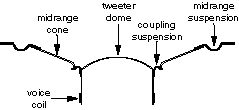
Bass comes from two custom made dual 6.5″ midwoofers, crossed over using an advanced first-order (6dB) network. This reduces phase issues as the signal manipulation is kept to a minimum. This type of network is not easy to use, requires careful driver selection and is considered by some designers as the perfect crossover network. Thiel has been perfecting this type of crossover network for over 30 years.
What is interesting about these mid-woofers are their motor structure. This is the part that pushes/pulls the cone converting electrical energy into mechanical energy. Most conventional drivers use a long voice coil and a short gap. Thiel does it the opposite, using a short voice coil and a long gap. The voice coil drives the cone when the magnetic forces in the gap act upon it. When you have a short gap and long voice-coil part of the voice coil will always be outside of the gap and therefore uncontrolled. With the system Thiel uses the entire voice coil is within the gap. Thiel then adds a copper ring and sleeve system which keeps the magnetic field constant even under high power. Thiel claims this reduces distortion by 90% over conventional drivers. They have been working with this motor structure for over 25 years and since 1997 have used it in every driver. It is nice to see such commitment to design and engineering philosophy’s.
For deep bass augmentation Thiel was kind enough to send along one of their SS2 Smart Subs. This overbuilt, yet visually unobtrusive sub box contains 2 ten inch drivers, a 1000watt class d (switching) amplifier, and some unusual electronics. First thing you will notice is the omission of the most commonly found (and most commonly misused) control, the cross-over adjustment.
The reason we need cross-over adjustment is to blend the sub with the main speakers, and prevent unnecessary frequencies from arriving at the subwoofer. Thiel offers a passive cross-over network custom made to match the Thiel speakers your pairing the sub with. This differs from conventional design as the PXO5 crossover does not remove any signal from the main speakers. In this setup it is used to augment the mains, rather than off-load the bass demands.
The only controls available to the user are LFE level control, which only regulates the level of output when using the LFE input (does not have any effect when using the main inputs) as well as side-wall and rear-wall distance settings. Those last two are what makes this sub smarter than your average woofer. When you adjust those you are telling the sub how close it is to a wall, this in turn adjusts the frequency response to reduce room-related frequency anomalies. Many subwoofers today offer room-correction which adjusts for a flat frequency response at the listening position using a measurement microphone and a digital signal processor. One weakness with auto room response is the microphone and sample positions. Slight changes in microphone positions can influence the response causing invalid correction, or correcting only for one seating location which may cause another seat to sound worse. Thiel removes those possibilities by compensating for boundary locations. This is truly a unique option, one I have yet to see in any other product.
Setup
The speakers were installed in my main listening room, which is 15′ by 20′, with large openings into adjacent rooms directly to either side of the front stage. A Denon 4308 receiver connected to a Bryston 9Bsst2 5ch amp powers the system, with a PS3 as Blu-ray and HD media source. Music playback comes from an Oppo 981HD for multi-channel SACD and an Onix XCD-88 cd-player handles redbook and HDCD. The MCS1 system replaces my reference speakers, which include a pair of MartinLogan Vistas, a Descent i center and a pair of open-baffle speakers with ribbon tweeters speakers from Raw Acoustics on surround duty.
Setting up the main speakers was straight-forward and the subwoofer was wired by XLR cable to the PX5 which was connected to the speaker outputs of the Bryston amp. As there is no extra load presented to the amplifier when using the PX5 you can connect both the speakers and the PX5 passive network to any amp without issue. As well I connected a single-ended RCA cable from the Denon’s LFE output to the LFE in on the smart sub. I told the Denon that the main speakers were large, sub on and set to receive LFE only. This setup sends and specific LFE information (0.1) to the sub, and sends a full-range signal to all 5 speakers allowing the PX5 to extract the bass info and send that to the Smart Sub.
In Use
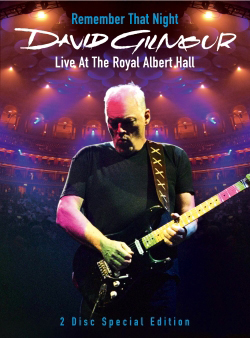
Quickly becoming one of my favorite demo Blu-Rays, the excellent concert disc by David Gilmour Remember that Night, contains many Pink Floyd gems and solo material. Guests include David Bowie, Graham Nash, and David Crosby. This disc is presented in the new HD audio formats and sounds utterly without flaw. When the opening note for Echos is played the crowd instantly recognizes the song, This sudden surge of crowd noise from the surrounds blended smoothly with the notes coming from the front stage. This is where having an identical five speaker system is appreciated. Next up, Time and the clock-chiming that opens the song. Here the multitude of high-frequency sounds can distort or fail to separate with less capable speakers. Not so with the MCS1’s their sound was crisp and clear with no fatigue.
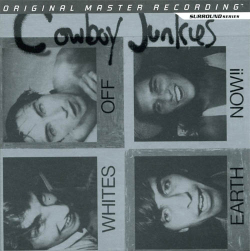
On to the SACD player, with Cowboy Junkies Whites off Earth Now Multi-channel SACD up first. This disc was recorded live with a single microphone and has some startlingly real dynamic range. There is plenty of ambient noise present, which with the MCS1’s was easily heard among the vocals and guitar work. The depth of this recording was easily conveyed through these speakers. There was no audible distortion of compression at any volume. I hesitate to name a single track as I found myself listening to the entire album and no single song stood out. Rarely during my listening sessions with this well played discs does that happen. It was with this recording that I began to get a feel for the Thiels strength, detail and realism.
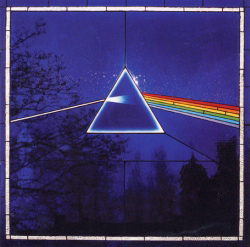
Pink Floyd’s Dark Side of The Moon Multi-channel SACD was next in the player. This was my first SACD purchase and first disc I ever heard in this format. For review purposes I jump straight to Us and Them and specifically the solo by Clare Torry. The speakers should be able to accurately convey the delicate power without sounding forced or strained. Which the MCS1’s did with ease. On Money the opening cash-register noises bounce from one speaker to another and I found the blend to be seamless. The bass line was forceful, dynamic and at no time did I notice the SmartSub – exactly what you want a sub to do, disappear.

Movies are great, but the real test for me is how a speaker plays back music and for that I chose two completely different discs. First up was the HDCD from Tool, Lateralus. I enjoy listening to this complex album which is full of distorted guitars, strong bass-lines and intricate drum work. What makes this a great test disc is the effort that went into the sound-quality. Most heavy rock albums are overly compressed, lacking in dynamic slam and instrument separation. Not this album, the compression is kept in check and the drum track was recorded separately on 1″ analog tape. The track Reflection opens with Danney Cary pounding out a drum sequence which spans his whole drum kit, which is placed by the MCS1’s perfectly. You hear individual drums a different locations between and behind the speakers. This wide range of drums is then reinforced with a solid bass line, which thanks to the SS2 smart sub has serious weight and definition. Even at loud volumes the bass line kept its own space and the drum track never fell apart. Compared to my reference MartinLogan Vista speakers, there was greater dynamic range, and cleaner high frequencies at loud volumes.

Center channel speakers are primarily used to reproduce voices, and my favorite test for that is a solo female voice. Rebekah Del Rio’s A cappella version of Roy Orbison’s classic Crying sung in Spanish, is one of the most difficult and rewarding songs to use. Found on the Mullholland Drive Soundtrack, her voice is the only sound on the entire track. There is emotion, beauty, sorrow and power in this song. When played back in the right system it will literally raise the hair on your neck. There is one particular part near the end where the power and dynamic range of her voice can cause lesser speakers to go into thermal compression and cause audible distortion. With my reference speakers, MartinLogan Vista electrostatic speakers, there is no distortion, and her beautiful voice is clean and accurate. With the MCS1 the tone was great, the dynamic range was there and there was zero distortion at any level. When pressed to compare the two, I did find my Vistas to be a tad more musical and warm, with the MCS1’s being on the ultra-detailed side.
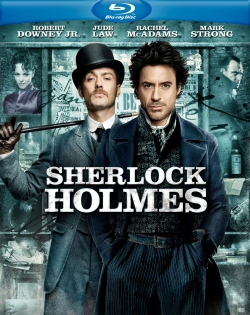
On to movies, I put the new Guy Ritchie flick, Sherlock Holmes on Blu-ray Video. I won’t comment on the movie itself, instead I focus on the shipyard fight chapter in particular. The DTS-HD Master Audio soundtrack is clean, and dynamic and has tremendous LFE content. This chapter works all speakers and is great for testing panning of your surrounds to the mains. If there is any timber-matching issues you will notice them. What I listen for here is a cohesive and immersive soundstage with no gaps as the sound pans from one speaker to the other. The MCS1 system was completely enveloping and I was unaware of the physical location of the speakers as my movie room disappeared into the shipyard. The SS2 smart sub really opened up here and provided a thundering bottom end that never ran out of steam and was so seamlessly matched to the mains that I was never aware of its presence.
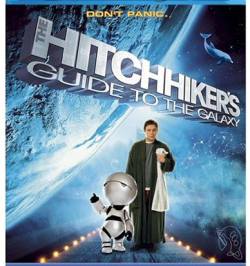
One of my all time favorite stories is the classic Hitchhikers Guide to the Galaxy by Douglas Adams. And thankfully Garth Jennings did a great job transferring the story to the screen. The Blu-ray is visually fantastic and while sometimes a tad light on the surround usage has some great LFE content. I have long turned to the Earth Destruction chapter to listen for a subwoofer’s ability to handle deep bass, as there is usable content down to 10Hz in this scene. With my reference sub, a MartinLogan Descent i, the lowest notes were not hit, however it does not react badly to being fed such a low note. Unlike other cheaper subs that will either crack loudly, emit ugly sounds from the ports, or worse shut down. With the SS2 I felt all the bass and heard no ill effects from the cabinet. This is the first sub in my listening room to do justice to this chapter.
Conclusions
Overall I found the MCS1’s to be versatile, revealing and detailed. They produce a wide sweet-spot, throw a huge soundstage and were able to play very loud without any distortion. Solid on their own, the MCS1’s still benefit from an added subwoofer and are perfectly matched to the unique SS2 subwoofer – easily the most capable sub I have heard to date. While I do prefer the sound of panels/dipoles for 2ch music listening, I would have no problem choosing this speaker set for a movie first or multi-channel music system.
I am not going to sugar coat this, $2,950 per speaker is a lot of money. Yes you can find cheaper speakers and no, these are not the best speakers ever. What they are is a highly-refined extremely clear and detailed speaker with no listening fatigue. And for the money you get over-built furniture-grade cabinets, custom designed components built in house and a ten year warranty. These speakers do their best with solid amplification and they will reveal many recording flaws. For good or bad!


